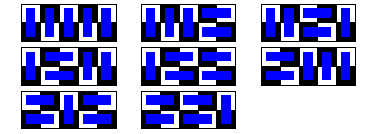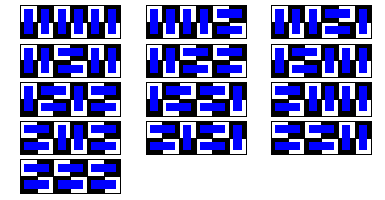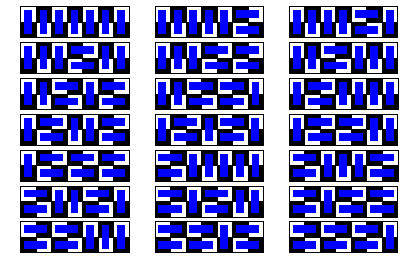
The Fibonacci numbers Fn are defined recursively by the relation Fn = Fn−1 + Fn−2, where F1 = F2 = 1. The first few Fibonacci numbers are 1, 1, 2, 3, 5, 8, 13, 21, 34, 55, 89, 144, 233, 377, ...
They describe, among other things, the number of ways to tile a 2 × (n−1) checkerboard with 2 × 1 dominoes.
There’s only one way to tile a 2 × 1 board:

Two ways to tile a 2 × 2 board:

Three ways to tile a 2 × 3 board:

Five ways to tile a 2 × 4 board:

Eight ways to tile a 2 × 5 board:

Thirteen ways to tile a 2 × 6 board:

Twenty-one ways to tile a 2 × 7 board:

See also Graham, Knuth, and Patashnik, Concrete Mathematics: A Foundation for Computer Science, Addison-Wesley, 1994.
Originally designed and rendered using Mathematica 3.0 and GifOMatic for NeXT.
© 1997–2025 Robert Dickau.
(With belated thanks to Steven Fairgrieve for some minor corrections.)
[ home ] || [ 2006-05-23 ]
www.robertdickau.com/fibboard.html